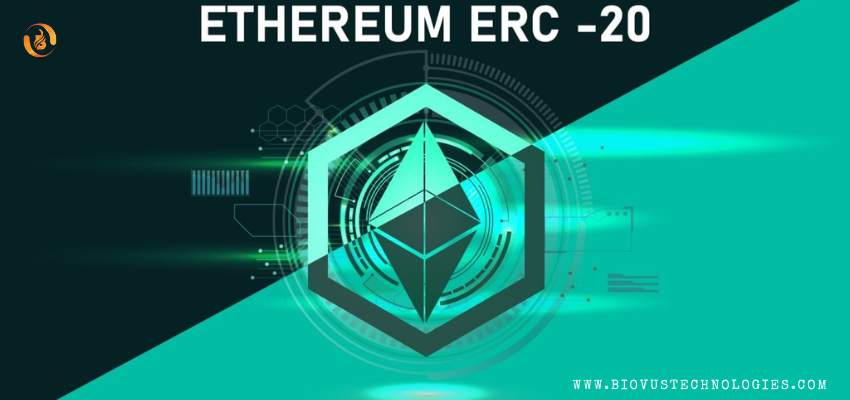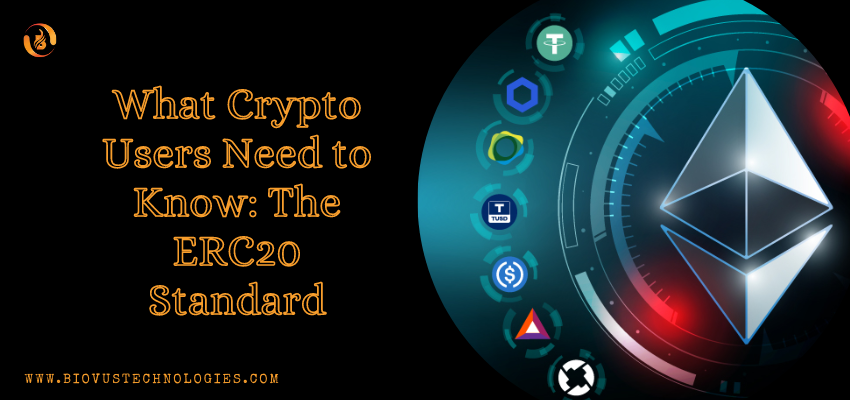The popularity of cryptocurrencies has skyrocketed in recent years, with Bitcoin reaching an all-time high. It’s no surprise that many altcoins want to break into this competitive market. The Ethereum blockchain development company in India serves as the foundation for many of these coins. As a result, they are compliant with the ERC-20 tokens and standards.
The ERC-20 acronym stands for (Ethereum Request For Comments), and the number 20 represents the standard’s unique number ID. ERC tokens are digital assets that are designed, issued, and used in the same way that Bitcoin is, with the exception that they only run on the Ethereum blockchain. These tokens primarily rely on a smart contract that tracks the token’s transactions. ERC-20, on the other hand, is a set of rules that developers can use to simplify and improve the process of creating a standard Ethereum-based token. So, if you’re exchanging USDT or DAI, you’re bound to come across the concept of ERC or ERC-20 tokens. But what exactly is ERC-20 and how does it work?
How Do the ERC-20 Standard Help Crypto Users?
Crypto traders and investors may or may not thrive with blockchain or smart contract technical knowledge. However, the ERC-20 token standard paved a strategic path for the creation of new tokens that neither of us should overlook.
When looking at cryptocurrencies from a blockchain development company in India , new tokens have always struggled to interact with one another. As a result, Ethereum established a standard for every new ticket built on Ethereum to follow the rules (ERC standard’s protocol.) Following that, a new coin must submit detailed information to the Ethereum Improvement Proposal (EIP). The name, symbol (an abbreviation used when displaying balances), decimals (the number of decimal places after the point), and the total supply of issued tokens are all standard ERC-20 parameters.
ERC-20 and Standard Crypto – Differences
While ERC-20 tokens do operate like a standard coin, their fundamental ideas are different. In actuality, the phrases “cryptocurrency” and “tokens” have distinct meanings and shouldn’t be used synonymously. To start, cryptocurrencies are digital assets that have been encrypted using encryption. This indicates that these cryptocurrencies are operating on their own unique blockchains and that the ledgers are dispersed across decentralized blockchain development companies in India.
The utility of tokens, on the other hand, is built on top of a blockchain. The ERC-20 tokens for Ethereum are among the most widely used, along with a few substitutes such as the ERC-223, and ERC-721.
ERC-20 tokens basically differ from traditional cryptocurrencies. They completely rely on the Ethereum network rather than having a separate blockchain. There is a petrol price to complete a transaction as a result. Additionally, a miner uses these fees to complete network transactions. Additionally, the gas charge varies according to network activity. In the end, gas prices rise as network congestion increases.
Smart Contracts and ERC-20
ERC-20 is the technological standard underlying smart contracts implementing the token on the Ethereum blockchain. It was proposed in 2015 by Fabian Vogelsteller, a prominent person in the blockchain industry with a background in web development. A smart contract is a piece of code that runs when another program or an end user makes a request for it. Additionally, smart contracts are in charge of processing transactions, verifying fees, and monitoring the balances of each token’s holders.
These contracts typically have a particular name, supply, and behavior. But they are all ERC-20 compliant as long as they follow the fundamental guidelines.

Pros Of ERC – 20 Tokens
Convenient
ERC-20 tokens are straightforward and quick to use. That’s because Ethereum smart contracts are created using the computer language Solidity, which is comparable to JavaScript. Developers can also use the Python-like Vyper programming language to create smart contracts.
Flexible And Customization
ERC-20 tokens can be modified to enable features like gas auto-refill for upcoming transactions, and freezing and unfreezing a token. Adding on a central mint to change the tokens in circulation, and more depending on the business logic and user interactions.
Liquidity
The Ethereum network gains new projects and users if the projects built on it are active and communicate with one another. The process of transferring ERC-20 tokens between each other has been increasingly more straightforward thanks to solutions like Uniswap.
Limitations Of ERC – 20 Tokens
Instability
The Proof-of-Stake consensus mechanism has just replaced Proof-of-Work on the Ethereum blockchain, thanks to ETH 2.0. Although ETH 2.0 seeks to address all scalability concerns. The project is still in its early stages and numerous improvements are still being made. There could be system instability right now. Additionally, when used as payment for smart contracts, some tokens may run the danger of being destroyed. ERC-233 was created as a result to get around the issue.
Low Entry Point
Some claim that it is too simple for people to make their own tokens with no clear purpose or objectives. Developers can so simply take advantage of the policies to create fake ICOs and tokens with non-value-adding enterprises.
Transfer Bugs
There are two different types of accounts in Ethereum. One of which is a contract account maintained by the contract code. The other is an externally owned account (EOA) controlled by private keys. Token transfers between EOA accounts utilizing the transfer feature go without a hitch. Sending money to a contract account triggers a glitch that has already cost users close to a million dollars.
Final Thoughts
Undoubtedly, ERC-20 tokens have had a big impact on the cryptocurrency market. They are not only in charge of the billion-dollar ICO sector. They are also expanding the use of digital assets. Without any interaction between the cryptocurrency and exchange developers, the newly minted tokens can be uploaded to exchange platforms after they are published. However, only if you follow the ERC-20 standard. Less risk, less complexity, greater uniformity, and greater token liquidity will all ensue, which will encourage consumers to have more faith in the system.
Newer standards like ERC-223 and ERC-777 have already been tried out by enthusiasts, but ERC-20 is still the recommended one. There is a good chance that the ERC-20 protocol will soon be strengthened by the addition of features to address flaws and token issues already present.
visit us on: www.biovustechnologies.com








Comment on “What Crypto Users Need to Know: The ERC20 Standard”